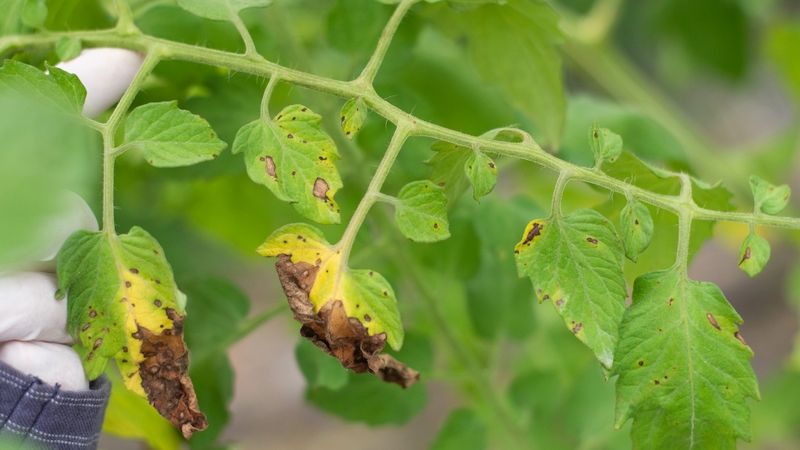Why When Pruning Prunes, You Should Go Long
Franz Niederholzer has grown tired of seeing so many blocks of French prunes cut back severely in the first few winters after planting, a training approach called short pruning. A University of California Cooperative Extension Orchard Systems Advisor working in the Colusa/Yuba City area, he estimates from one-third to one-half of the trees he sees are still farmed that way, although he says there is now much less justification for taking such an approach.
Long pruning is not new, says Niederholzer, who serves as a member of Western Fruit Grower’s Editorial Advisory Board. The notion was developed in the 1980s to get earlier production in prunes. Growers get higher yields from refraining from doing less “hard” pruning during training, and he points to one UC study showing yields averaging 6,000 pounds per acre more in the fifth leaf. Although there were no discernible yield differences in later years, higher yields in early years are critical to getting a prune orchard into the black as soon as possible.
However, more fruiting wood means more wind resistance in the breezy Sacramento Valley. “They fell out of favor because of blow-overs,” he says. “It’s like building a big, tall sail — they just go over, or at least tip. You have to push them up, and then you can break roots, etc.”
Fortunately, the blow-over problem was largely solved by the importation a dozen years ago of the super-strong Krymsk 86 rootstocks from Russia. “Now you can long prune, but not in the minds of many growers because it’s been so long since it’s been popular,” says Niederholzer.
It is probably appropriate then, he says, that the drive to bring back long pruning is primarily being driven not by farm advisors but by growers themselves. Niederholzer says two growers, Joe Turkovich of Winters, “a really savvy prune grower,” and Erick Nielsen, an experienced grower in the Orland area, who also owns ENE topping/harvesting, have been encouraging growers to go with long pruning.

Short (left) and long (right) pruning after the first (primary scaffolds) dormant period.
Photos by M.L. Poe, UC Agriculture and Natural Resources
CROP DIFFERENTIATION
Turkovich, who was raised on a prune orchard and just recently served as Chairman of the California Prune Board, says he’s long been interested in long pruning because it was so clear it took less labor, and the trees got into bearing earlier.
“Part of the problem was many prune growers were also growing crops like peaches and apricots that benefit from an open vase architecture, so they feel the need to open up prune trees the same way,” he says, “but there’s not as much benefit in prunes, as color is not as important as it is for fresh market fruit, and an open vase sets the tree up for sunburn and disease.”
Turkovich emphasizes he is not a pioneer — that the long pruning system is still found in the UCCE Prune Production Manual — he just thinks all growers could benefit from going with a long pruning system. He notes that he has two older prune orchards, one 29, now being removed, and one 27, that have always been farmed that way — very productively.
“If you long prune a tree, you end up with more upright scaffolding and flatter fruit wood angles, which bear earlier,” he says. “It’s modeled after a pear tree, which is naturally more erect. That structure can support a lot of weight. If you long prune, that architecture just takes over, which is great, and you eliminate the need for tying and propping.”
START TRAINING EARLY
One important note, however: Turkovich says the trees must be trained for long pruning essentially right from planting. “Growers ask if they can take 5- to 7-year-old trees and do it. No, you need to start right out of the gate,” he says. “Heading cuts used in the short pruning method produce a short, bushy tree that’s very cluttered and shaded in the middle; with unheaded long pruning you grow a taller tree with a lot more airflow and better sunlight. The key is to establish fewer primary scaffolds; three is optimum. That way the middle of the tree becomes less cluttered and this allows for more air flow and less blow over. You end up with less problems as the tree ages.”
That architecture sounds great to Niederholzer, who believes growers may have fewer problems with wood rot infections and disease if they go with long pruning.
In the 1980s, there was very little canker or wood rot disease found in the prune orchards of California, Niederholzer says, nothing like there is today. It’s true that there are just a lot more fruit and nut trees in the state than in the past, but it stands to reason that if you create more entry points for disease, you’re going to create more problems.
“Pruning wounds, especially bench cuts to open the tree canopy, are vulnerable to infection. You’re basically taking a petri dish and putting it out into the orchard,” he says. “We want to get the word out. Extension has been helping get the word out about what Joe and Erick have developed.”









